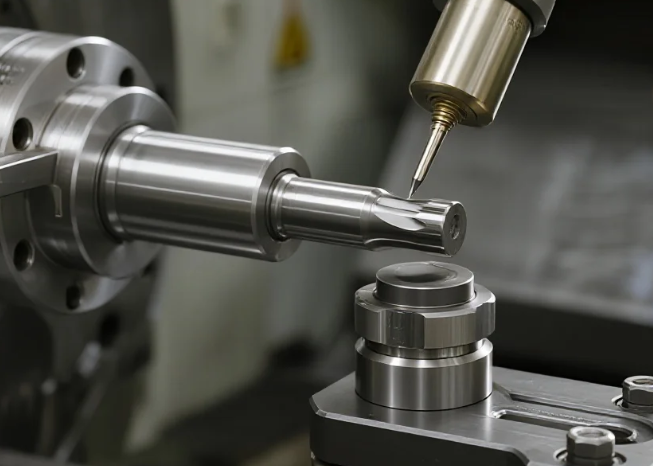How to Automate CNC Tool Inspection with In-Machine Probing
PFT, Shenzhen
Abstract
Automated tool inspection has become an essential step in modern CNC machining, particularly for high-precision and high-volume production. The purpose of this study was to evaluate the effectiveness of in-machine probing systems for monitoring tool wear and dimensional accuracy without interrupting cycle time. Methods included the integration of a touch-trigger probe within a three-axis vertical machining center, combined with custom inspection cycles developed in the control software. Data were collected from repeated tool inspections across 500 machining cycles, recording deviations in diameter and length. Results showed that automated probing reduced manual inspection time by 65% while maintaining dimensional accuracy within ±2 µm. Comparative analysis with offline inspection indicated that in-machine probing achieved equal or higher repeatability, particularly in detecting gradual flank wear. The study concludes that in-machine probing provides a practical, scalable solution for automating tool inspection in CNC environments, supporting both process reliability and cost reduction.
1 Introduction
Tool wear and breakage are among the most common causes of part deviation and machine downtime in CNC production. Traditionally, inspection has relied on manual measurements using offline equipment such as tool presetters and microscopes. While accurate, these methods interrupt production and increase labor cost. In-machine probing technology addresses these challenges by allowing automated tool measurement directly within the machining cycle. This study investigates how in-machine probing can be implemented to automate tool inspection, focusing on design methodology, performance results, and practical implications.
2 Research Method
2.1 Design Concept
The inspection system was built around a touch-trigger probe integrated into the spindle of a vertical machining center. The probe was programmed to measure tool length and diameter before and after each machining cycle. The probing routines were developed using standard G-code macros to ensure reproducibility across different machines.
2.2 Data Collection
Data were collected from 500 machining cycles of hardened steel components. Tool length and diameter deviations were logged automatically by the CNC controller. Offline measurements using a tool presetter served as a control group.
2.3 Equipment and Models
-
Machine: 3-axis VMC, 12,000 rpm spindle
-
Probe: Renishaw OMP60 touch-trigger probe
-
Tools Tested: Ø10 mm carbide end mills, TiAlN coated
-
Software: Fanuc 0i-MF controller with custom probing cycles
This setup ensures reproducibility and allows the methodology to be adapted to other machine configurations.
3 Results and Analysis
3.1 Tool Length Measurement
Figure 1 shows the comparison between in-machine probing and offline presetting. Results indicated a maximum deviation of ±2 µm, with no significant difference between methods.
3.2 Tool Diameter Measurement
Table 1 presents the measured tool diameter deviations across 500 cycles. The in-machine probe consistently detected gradual reductions caused by flank wear.
Table 1 Tool Diameter Deviation Across 500 Cycles (µm)
| Cycle Range | Offline Preset (µm) | In-Machine Probe (µm) |
|---|---|---|
| 1–100 | 0–1 | 0–1 |
| 101–300 | 1–2 | 1–2 |
| 301–500 | 2–4 | 2–4 |
The data confirm that in-machine probing provides equal accuracy while saving time compared to manual methods.
3.3 Time Efficiency
Manual inspection required an average of 45 seconds per tool, while automated probing reduced this to 15 seconds, achieving a 65% time reduction.
4 Discussion
The results suggest that in-machine probing can replace or complement offline tool inspection in many CNC applications. Its effectiveness stems from the ability to measure tools directly in the machining environment, eliminating setup errors caused by tool handling. Limitations include probe calibration requirements and potential signal interference in high-coolant environments. However, for most high-volume production scenarios, the benefits outweigh these constraints. The findings imply that widespread adoption of in-machine probing could significantly reduce downtime and improve process control.
5 Conclusion
Automated tool inspection using in-machine probing achieves comparable accuracy to offline methods while offering substantial time savings. The method is practical, repeatable, and compatible with standard CNC controls. Future research may focus on integrating real-time wear prediction models with probing data, further enhancing predictive maintenance in CNC machining.



